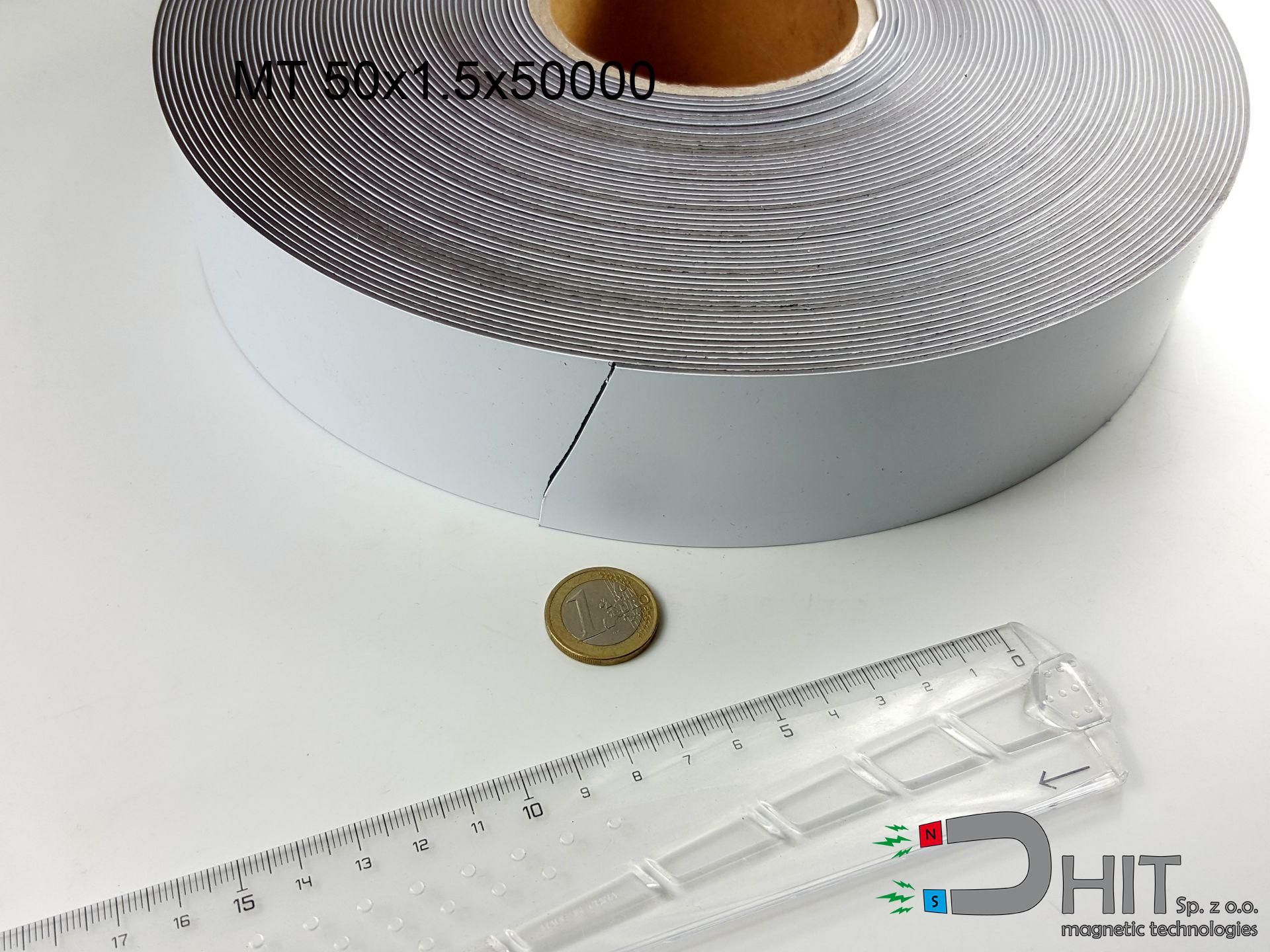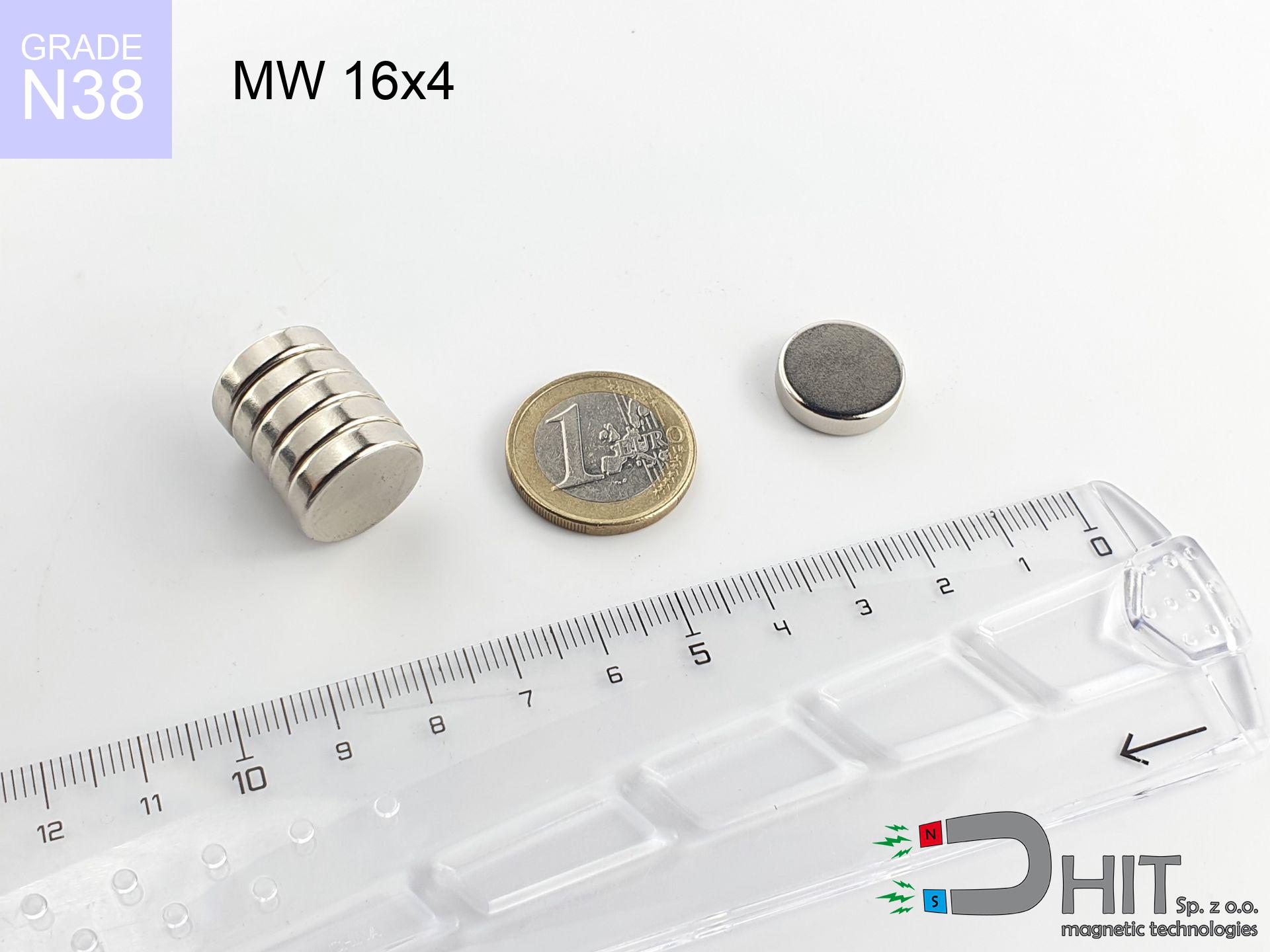MT 50x1.5x50000 - magnetic tape
magnetic tape
Catalog no 380511
length [±0,1 mm]
50 mm
Width [±0,1 mm]
1.5 mm
Height [±0,1 mm]
50000 mm
Magnetization Direction
↔ radial
430.50 ZŁ with VAT / pcs + price for transport
350.00 ZŁ net + 23% VAT / pcs
bulk discounts:
Need more?Want to talk magnets?
Pick up the phone and ask
+48 22 499 98 98
otherwise let us know through
contact form
our website.
Force along with form of neodymium magnets can be analyzed on our
our magnetic calculator.
Same-day shipping for orders placed before 14:00.
MT 50x1.5x50000 - magnetic tape
Magnetic properties of material
Physical properties of NdFeB
Shopping tips
Advantages and disadvantages of neodymium magnets NdFeB.
In addition to their remarkable strength, neodymium magnets offer the following advantages:
- They virtually do not lose strength, because even after ten years, the performance loss is only ~1% (in laboratory conditions),
- They protect against demagnetization induced by external electromagnetic environments effectively,
- Because of the brilliant layer of silver, the component looks high-end,
- Magnetic induction on the surface of these magnets is impressively powerful,
- With the right combination of compounds, they reach excellent thermal stability, enabling operation at or above 230°C (depending on the form),
- The ability for accurate shaping or adjustment to specific needs – neodymium magnets can be manufactured in multiple variants of geometries, which amplifies their functionality across industries,
- Important function in cutting-edge sectors – they find application in HDDs, electric drives, medical equipment and other advanced devices,
- Thanks to their concentrated strength, small magnets offer high magnetic performance, while occupying minimal space,
Disadvantages of NdFeB magnets:
- They may fracture when subjected to a powerful impact. If the magnets are exposed to physical collisions, it is advisable to use in a protective case. The steel housing, in the form of a holder, protects the magnet from fracture while also strengthens its overall durability,
- They lose power at elevated temperatures. Most neodymium magnets experience permanent loss in strength when heated above 80°C (depending on the geometry and height). However, we offer special variants with high temperature resistance that can operate up to 230°C or higher,
- They rust in a damp environment – during outdoor use, we recommend using encapsulated magnets, such as those made of rubber,
- Limited ability to create threads in the magnet – the use of a housing is recommended,
- Potential hazard due to small fragments may arise, if ingested accidentally, which is significant in the protection of children. Additionally, small elements from these assemblies might interfere with diagnostics if inside the body,
- In cases of large-volume purchasing, neodymium magnet cost may be a barrier,
Detachment force of the magnet in optimal conditions – what contributes to it?
The given lifting capacity of the magnet means the maximum lifting force, assessed in a perfect environment, namely:
- with the use of low-carbon steel plate serving as a magnetic yoke
- with a thickness of minimum 10 mm
- with a polished side
- with no separation
- in a perpendicular direction of force
- under standard ambient temperature
Lifting capacity in real conditions – factors
The lifting capacity of a magnet is determined by in practice key elements, ordered from most important to least significant:
- Air gap between the magnet and the plate, because even a very small distance (e.g. 0.5 mm) can cause a drop in lifting force of up to 50%.
- Direction of applied force, because the maximum lifting capacity is achieved under perpendicular application. The force required to slide the magnet along the plate is usually several times lower.
- Thickness of the plate, as a plate that is too thin causes part of the magnetic flux not to be used and to remain wasted in the air.
- Material of the plate, because higher carbon content lowers holding force, while higher iron content increases it. The best choice is steel with high magnetic permeability and high saturation induction.
- Surface of the plate, because the more smooth and polished it is, the better the contact and consequently the greater the magnetic saturation.
- Operating temperature, since all permanent magnets have a negative temperature coefficient. This means that at high temperatures they are weaker, while at sub-zero temperatures they become slightly stronger.
* Lifting capacity testing was performed on a smooth plate of suitable thickness, under a perpendicular pulling force, whereas under parallel forces the load capacity is reduced by as much as 75%. In addition, even a small distance {between} the magnet’s surface and the plate decreases the load capacity.
Exercise Caution with Neodymium Magnets
Neodymium magnets can demagnetize at high temperatures.
While Neodymium magnets can lose their magnetic properties at high temperatures, it's important to note that the extent of this effect can vary based on factors such as the magnet's material, shape, and intended application.
Do not place neodymium magnets near a computer HDD, TV, and wallet.
Magnetic fields generated by neodymium magnets can damage magnetic storage media such as floppy disks, credit cards, magnetic ID cards, cassette tapes, video tapes, or other similar devices. In addition, they can damage televisions, VCRs, computer monitors, and CRT displays. Avoid placing neodymium magnets in close proximity to electronic devices.
The magnet coating contains nickel, so be cautious if you have a nickel allergy.
Studies clearly indicate a small percentage of people who suffer from metal allergies such as nickel. An allergic reaction often manifests as skin redness and rash. If you have a nickel allergy, try wearing gloves or avoid direct contact with nickel-plated neodymium magnets.
Dust and powder from neodymium magnets are highly flammable.
Do not attempt to drill into neodymium magnets. Mechanical processing is also not recommended. Once crushed into fine powder or dust, this material becomes highly flammable.
Magnets will attract to each other, so remember not to allow them to pinch together without control or place your fingers in their path.
Magnets attract each other within a distance of several to around 10 cm from each other. Remember not to insert fingers between magnets or in their path when attract. Depending on how large the neodymium magnets are, they can lead to a cut or alternatively a fracture.
It is important to maintain neodymium magnets out of reach from children.
Neodymium magnets are not toys. Do not allow children to play with them. Small magnets can pose a serious choking hazard. If multiple magnets are swallowed, they can attract to each other through the intestinal walls, causing significant injuries, and even death.
Under no circumstances should neodymium magnets be brought close to GPS and smartphones.
Neodymium magnets are a source of strong magnetic fields that cause interference with magnetometers and compasses used in navigation, as well as internal compasses of smartphones and GPS devices.
Neodymium magnets are extremely fragile, leading to their cracking.
Neodymium magnets are extremely delicate, and by joining them in an uncontrolled manner, they will crack. Neodymium magnets are made of metal and coated with a shiny nickel surface, but they are not as hard as steel. In the event of a collision between two magnets, there may be a scattering of fragments in different directions. Protecting your eyes is crucial in such a situation.
Keep neodymium magnets away from people with pacemakers.
Neodymium magnets produce strong magnetic fields that can interfere with the operation of a heart pacemaker. However, if the magnetic field does not affect the device, it can damage its components or deactivate the device when it is in a magnetic field.
Neodymium magnets are among the most powerful magnets on Earth. The astonishing force they generate between each other can shock you.
To handle magnets properly, it is best to familiarize yourself with our information beforehand. This will help you avoid significant harm to your body and the magnets themselves.
Caution!
So that know how strong neodymium magnets are and why they are so dangerous, read the article - Dangerous very strong neodymium magnets.



![UMP 94x40 [3xM10] GW F550 Silver Black / N52 - search holder UMP 94x40 [3xM10] GW F550 Silver Black / N52 - search holder](https://cdn3.dhit.pl/graphics/products/ump-94x40-3xm10-gw-f550-fad.jpg)


![SM 25x300 [2xM8] / N42 - magnetic separator SM 25x300 [2xM8] / N42 - magnetic separator](https://cdn3.dhit.pl/graphics/products/sm-25x300-2xm8-kud.jpg)

